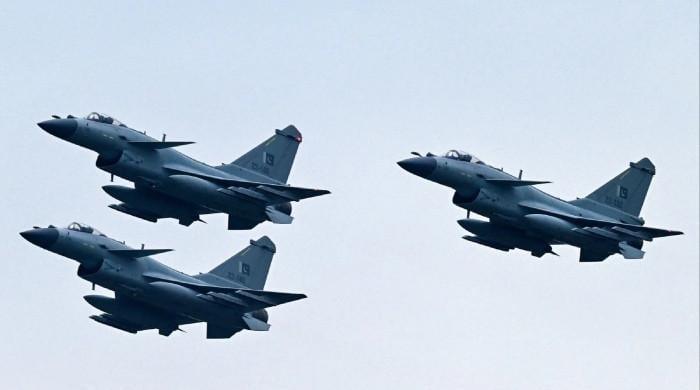Shanghai: A little more than a week after a ceasefire of time with India, the Minister of Foreign Affairs of Pakistan reached Beijing, the largest weapon supplier in the country.
The visit comes as international analysts and governments intensely examine the performance of the weapons provided by Chinese after recent air commitments between Pakistan and India.
A striking claim of four days of fighting earlier this month was the announcement of Islamabad according to which his Chinese planes had succeeded in six Indian planes, including three fighters of Rafale of French manufacture.
This assertion led some observers to consider alleged victories as a powerful symbol of Beijing’s military power on the world scene.
However, the experts who spoke to AFP have warned of final conclusions on the prowess of Chinese equipment according to the limited scope of recent skirmishes.
“It was a rare opportunity for the international community to assess Chinese military equipment on the battlefield against Western (Indian) material,” said Lyle Morris of the Asia Society Policy Institute.
While China pays hundreds of billions of dollars into defense expenses each year, it is far behind the United States as an exporter of weapons.
The Chief Researcher of Stockholm International Peace Research Institute (SIPRI) said Siemon Wezeman AFP That Chinese drones are used in the operations to combat terrorism and that its weapons were deployed by Saudi Arabia in Yemen and against rebel forces in African countries.
“But it is the first time since the 1980s that a state has used a large number of Chinese weapons of many types in action against another state,” said Wezeman, referring to the Iran-Iraq war when they were used on both sides.
Pakistan represents around 63% of Chinese weapons exports, according to Sipri. In recent fights, Pakistan used vigorous J10-C and JF-17 planes, armed with air-to-air missiles. It was the first time that the J10-C was used in active fight, said the Yun Sun of the Stimson Center.
Islamabad air defenses also used the Chinese kit – including the long -range surface missile system of HQ -9P – and the Chinese radar deployed as well as armed and recognition drones.
“It was the first fight sustained where most of the Pakistani forces used Chinese weapons and, essentially, was based on them as a main option,” said Bilal Khan, founder of the news and defense analysis of Toronto.
India has officially confirmed that none of its aircraft has been lost, although a senior security source said AFP Three jets had crashed on a soil at home without giving the brand or the cause. Rafale Dassault manufacturer did not comment either.
The Rafale is considered one of the most high-tech jets in Europe, while the J10-C “is not even the most advanced in China,” said James Char of the Nanyang technological university in Singapore.
But if Pakistan’s claims are true, “it should not be surprising … Since the Rafale is a Multirole fighter, while the J-10C was built for an air fight and is also equipped with a stronger radar,” said Char.
In the days following the Dogfight report, the actions of the manufacturer of J10-C Chengdu Aircraft Company increased by more than 40%.
“We will most likely see more orders to go to Chinese entrepreneurs,” said the Stimson of the Stimson Center. However, “it will take time and a significant reorientation of Chinese weapons manufacturers for the country to be an exporter of large weapons,” said Jennifer Kavanagh for the defense of American reflection groups.
She noted that China “cannot massage certain key entries, including airplane engines”.
Wezeman said he thought that stock markets “reacts excessively”, because “we always have to see how much the weapons used worked and if it really means a lot”. Even if more data emerges, the conflict still does not reveal much about the capacities of the Chinese army, analysts said.
China’s own systems and weapons are much more advanced than it exports. And although high -tech equipment is important, “much more important is how these weapons are used,” said Kavanagh.
Brian Hart of the Center for Strategic and International Studies (CSIS) said that he would warn against “too much reading” in recent developments. “I do not think you can make direct comparisons with the way in which these Chinese manufacturing systems would be carried out in different environments against more advanced adversaries like the United States,” he said.
“Since the number of data points is low and as we do not know much about the competence and training of staff on each side, it is difficult to draw definitive conclusions,” said Kavanagh.




